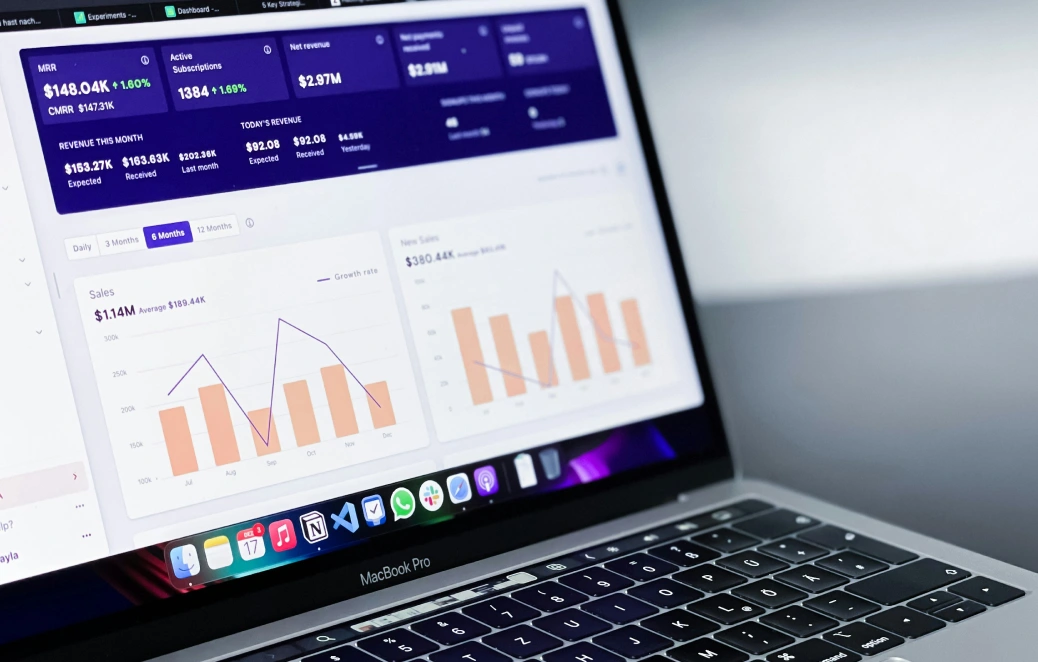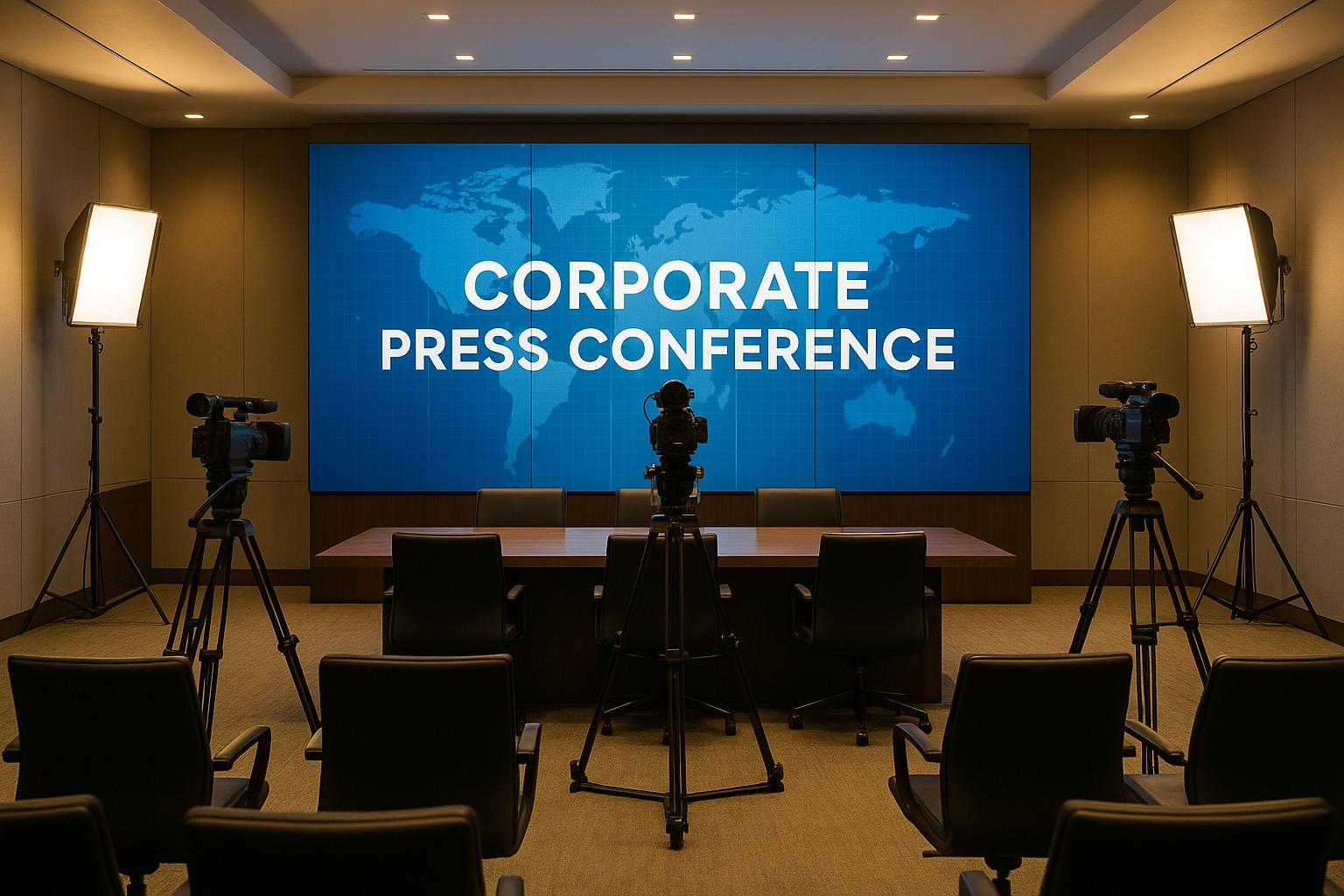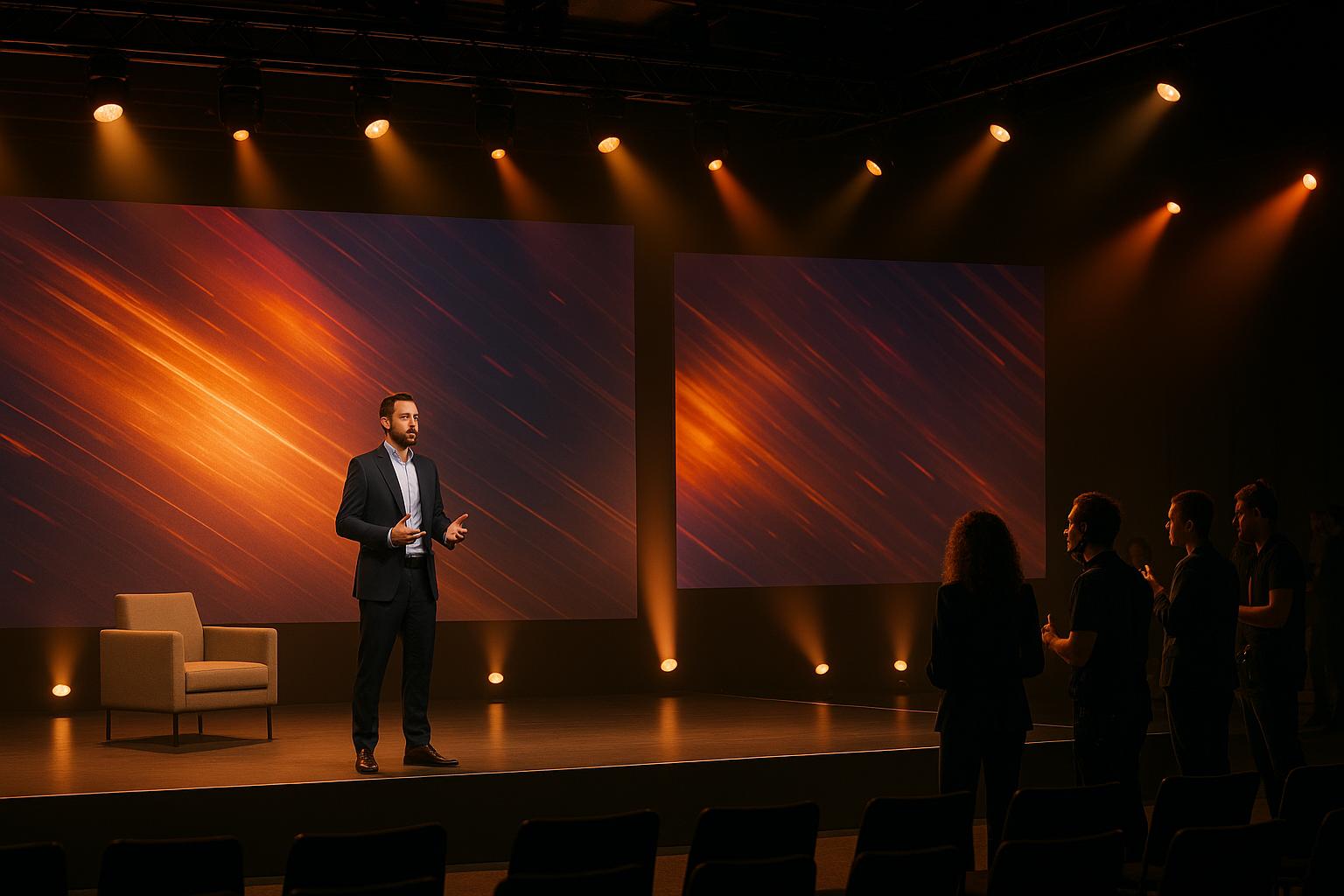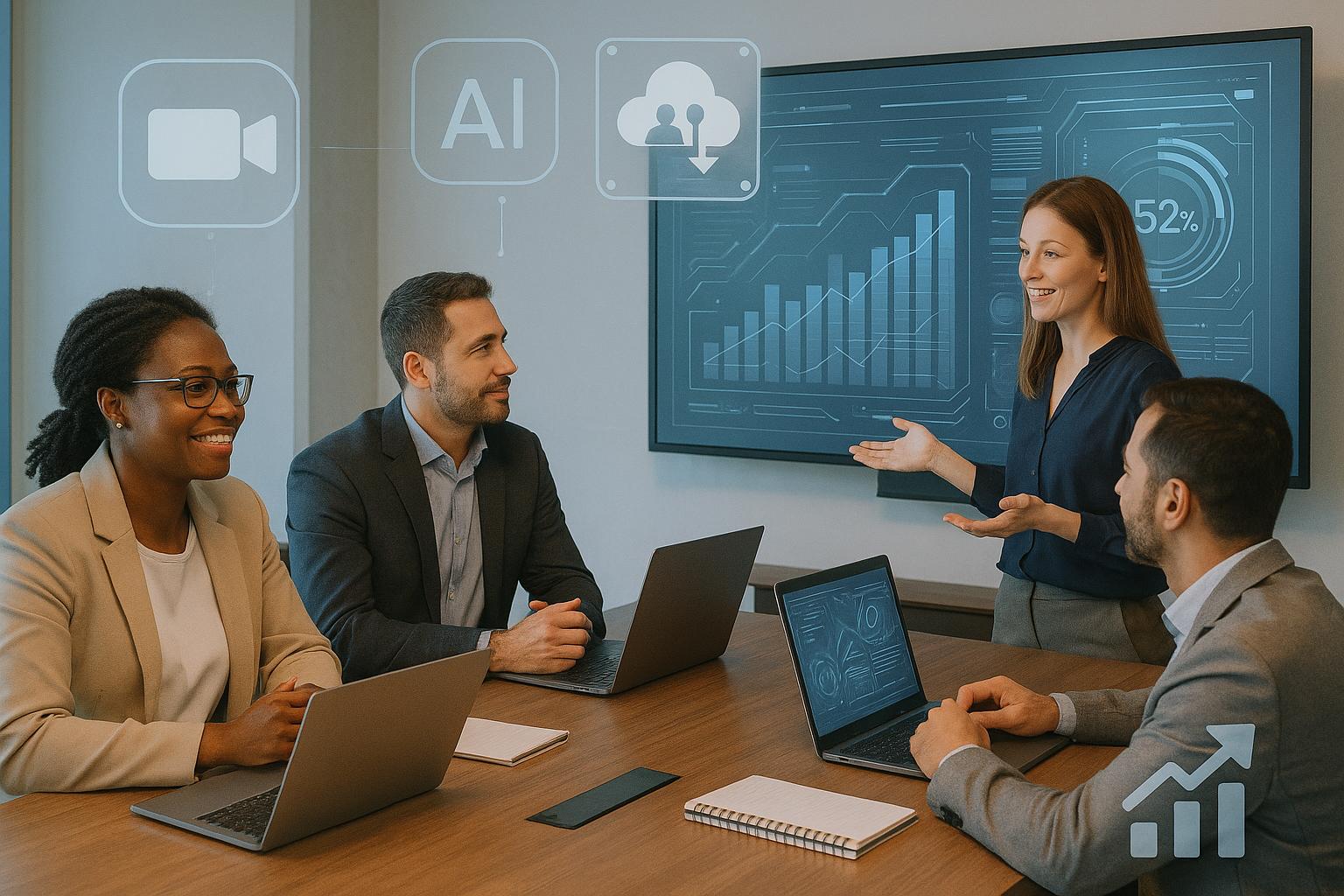Global Broadcast Production: Creating Unforgettable Shareholder Meetings & Beyond

Chief Executive Officer
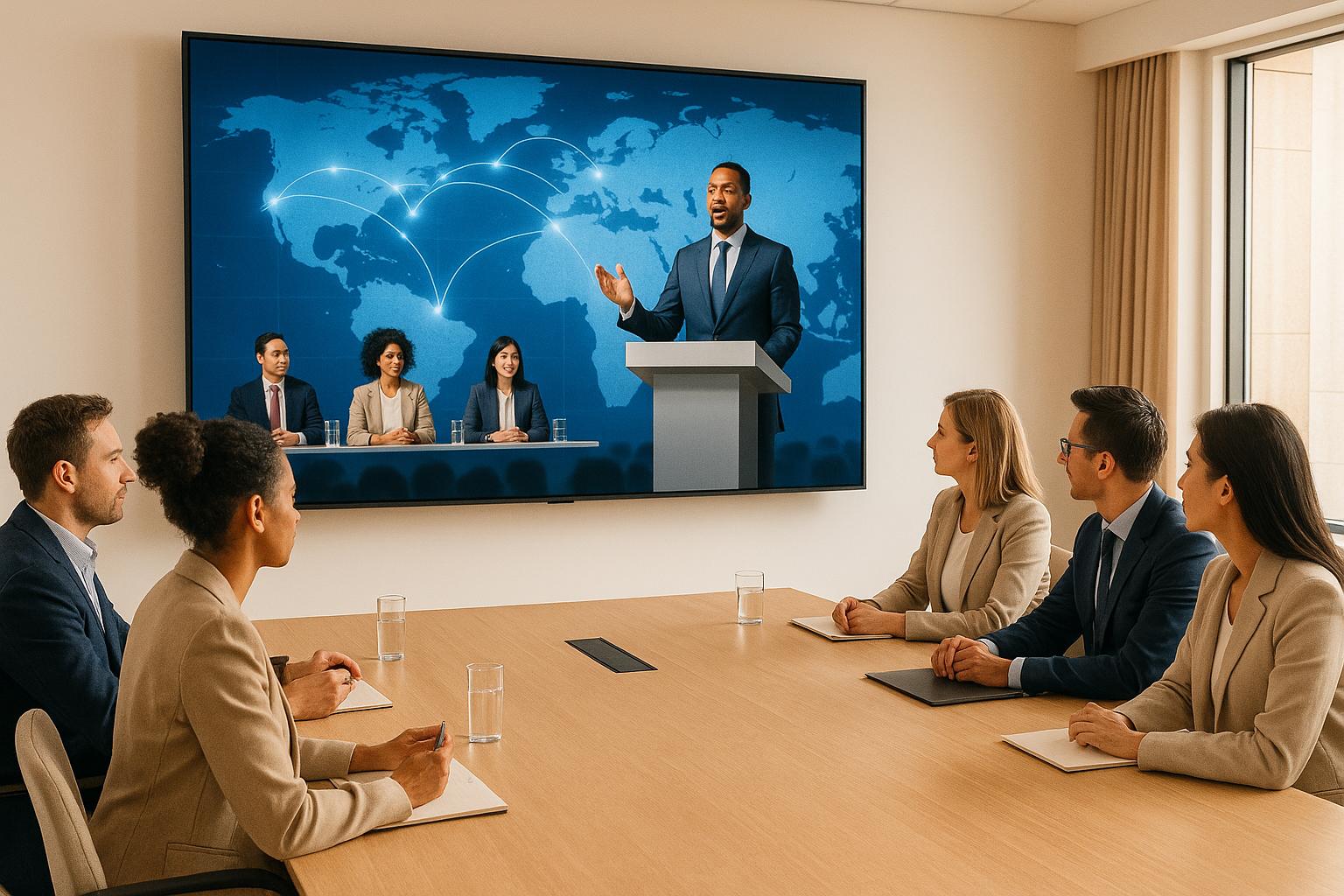
Shareholder meetings have transformed. Companies now leverage global broadcast production to engage investors worldwide, breaking down physical barriers and boosting participation. Virtual and hybrid formats offer live Q&A, interactive polls, and recorded access, ensuring stakeholders stay informed and connected.
Key Takeaways:
- Virtual & Hybrid Formats: Combine in-person and online participation for broader accessibility.
- Interactive Features: Live Q&A, polls, and real-time voting enhance engagement.
- Tech Requirements: High-quality audio, video, and reliable internet are essential.
- Backup Plans: Redundant systems and pre-recorded content address technical issues.
- AI & Analytics: Track engagement, sentiment, and improve future events.
Why it matters: These strategies ensure shareholder meetings are professional, transparent, and engaging, fostering stronger relationships with investors.
2024 Annual Shareholder Meeting | Tesla
Core Strategies for Designing Memorable Shareholder Meetings
In today’s hyper-connected world, creating a memorable shareholder meeting demands meticulous planning. From the opening remarks to the final Q&A, every detail matters. The most impactful meetings go beyond standard financial updates, meeting shareholders’ expectations for clarity, engagement, and a polished execution that reflects the company’s values. To achieve this, a well-thought-out strategy is essential, ensuring the event resonates with stakeholders on all levels.
Complete Event Planning Process
The agenda is the backbone of any successful shareholder meeting. A carefully designed agenda not only meets regulatory requirements but also keeps participants engaged. Start by identifying the key messages you want to convey and organize them in a way that flows naturally. Avoid overwhelming attendees with dense financial data right at the beginning - instead, aim to build momentum as the meeting progresses.
The best agendas combine financial updates with a broader narrative. Don’t just share numbers - contextualize them. Discuss market challenges, highlight strategic decisions, and outline future opportunities. This approach helps shareholders understand the bigger picture, making the data more meaningful and relevant.
Speaker preparation is another critical element, especially for global broadcasts. Presenters should be comfortable with the technology being used and prepared to handle both in-person and remote audiences. This requires training on how to adapt their presentation style to different formats, as well as having backup communication methods in place to address any technical hiccups.
For on-site staffing, a strong team is essential. Global broadcasts demand technical specialists, digital moderators, and coordinators who can ensure smooth operations. Assign team members to monitor remote engagement and address technical issues in real time, ensuring every shareholder can fully participate, no matter where they are.
Detailed run-of-show documents are vital for navigating the complexities of global meetings. These should outline the timing for technical checks, speaker transitions, and presentation materials while also including contingency plans for potential disruptions. A well-prepared plan keeps the event running smoothly, even in the face of unexpected challenges.
Technical Setup and AV Requirements
When it comes to technical setup, high-quality audio is non-negotiable. Clear sound is essential for remote participants to follow along. Invest in professional microphones, audio mixers, and backup systems to ensure that your audio is crisp and reliable, regardless of the device or environment participants are using.
Audio clarity is particularly important because attendees may join from various settings - some quiet, others noisy. Your setup needs to deliver consistent sound quality that accommodates these differences, ensuring all participants can hear and understand the content.
For video production, aim for a polished and professional look. Use multiple camera angles, proper lighting, and smooth transitions to elevate the visual experience. This isn’t a casual video call - shareholder meetings should reflect the company’s attention to detail and professionalism.
Lighting design also plays a significant role. Proper lighting ensures speakers look professional and engaged while meeting the technical requirements of broadcast cameras. Poor lighting can detract from the presentation’s quality and impact how stakeholders perceive the company.
Reliable internet is another cornerstone of a successful meeting. High-quality video and audio streaming require substantial bandwidth, so make sure to have backup internet options in place. Even a brief connectivity issue can disrupt the meeting and harm its credibility.
Backup Planning
No matter how robust your technical setup is, you need a solid backup plan. Redundant systems for internet, audio, and streaming are essential. Time zone challenges can be addressed with pre-recorded segments, and clear emergency communication protocols should be established to handle unexpected issues.
Assign specific roles to team members for managing different types of problems. For example, designate individuals to handle technical glitches, respond to participant questions, and manage media inquiries. This allows presenters to stay focused on delivering their content without distractions.
Rehearsals are a crucial part of backup planning. Simulate failure scenarios to test backup systems and alternative communication methods. Make sure every team member knows their role in these situations to maintain a professional and confident atmosphere during the event.
Finally, prepare shareholders for potential issues by communicating clearly before the meeting. Share information about backup access methods, alternative participation options, and technical support contacts. This proactive approach helps reassure stakeholders that they’ll have a seamless experience, even if unexpected challenges arise. By prioritizing these strategies, companies can ensure their shareholder meetings are inclusive, engaging, and professionally executed.
Advanced Audiovisual Tools and Hybrid Event Technologies
Once you’ve got the basics covered, advanced audiovisual tools can take your broadcast production to the next level. These tools help create captivating hybrid experiences, going beyond the standard technical setup to truly engage your audience.
Professional-Grade Cameras
High-quality cameras, such as the NearStream VM33, ensure your remote audience enjoys crystal-clear, broadcast-level video quality.
External Microphones
Good audio is just as important as video. External microphones are key to capturing clear, reliable sound, making your broadcasts more professional and enjoyable to listen to.
Video Conferencing Software
Platforms like Zoom, Microsoft Teams, WebEx, GoToMeeting, and Jitsi make it easy to connect with remote participants and expand your event’s reach. These tools help ensure everyone can join in, no matter where they are.
sbb-itb-ae35a94
Maximizing Audience Engagement in Corporate Settings
A great global broadcast does more than just deliver sharp video and crisp audio. The best shareholder meetings go a step further, using interactive tools and data insights to turn passive viewers into active participants. These meetings aren’t just about sharing updates - they’re about making shareholders feel involved, valued, and part of the process. Every digital tool and feature supports the goal of creating events that are engaging, smooth, and transparent.
Interactive Features for Stakeholder Participation
Interactive tools are game-changers when it comes to engaging stakeholders. Real-time Q&A sessions and live polls let shareholders actively participate by submitting questions and sharing feedback during the meeting. These tools give leadership a way to gauge sentiment on key topics instantly.
Other features, like online voting and pre-meeting question submissions, make it easy for stakeholders to participate no matter where they are. Two-way audio-visual technology takes this a step further, enabling real-time discussions and seamless proxy voting for shareholders worldwide .
Accessibility is another key factor. Real-time captioning and translation services ensure that language barriers don’t stand in the way of participation, making the meeting inclusive for a global audience.
Using AI for Audience Insights
Artificial intelligence adds a whole new layer of understanding to stakeholder engagement. AI-powered analytics can track how engaged the audience is throughout the meeting. It identifies which parts of the event hold their attention and which topics spark the most interest, helping companies fine-tune their future messaging.
Sentiment analysis goes beyond just tracking attendance. By analyzing chat messages, Q&A inputs, and poll responses, AI can uncover what excites or concerns stakeholders. This allows leadership to anticipate needs and address issues proactively.
AI also helps identify patterns that might otherwise be missed. For instance, it can highlight moments when attention dips, pinpoint the speakers who resonate most with the audience, and show how different shareholder groups respond to specific topics. These insights are invaluable for crafting clear and effective communication strategies.
The value of AI doesn’t end when the meeting is over. Post-event analytics provide a wealth of information, from recurring themes in questions to overall engagement trends. These insights help companies improve future events and identify areas where clearer communication could make a difference.
Maintaining Clear Communication
Good communication is the backbone of any successful shareholder meeting. It starts well before the event and continues long after. Digital platforms make it easy to centralize updates, ensuring shareholders are informed every step of the way. Pre-meeting instructions should clearly outline technology requirements and participation steps so that everyone feels ready to engage.
Transparency is key. When stakeholders understand how to submit questions, vote, and access materials, they’re more likely to participate actively. Confidence in the process grows when everything is clear and straightforward.
Reaching stakeholders through multiple channels - like email, investor portals, and mobile apps - ensures everyone gets the information they need in the way they prefer. This multi-channel approach boosts participation rates.
On-demand content is another effective way to keep shareholders engaged. Recording key parts of the meeting and making them available later accommodates those in different time zones or with busy schedules. This flexibility shows respect for shareholders’ time and circumstances, which is especially important for global audiences.
Overcoming Challenges in Global Broadcast Production
Producing global broadcasts for shareholder meetings isn’t without its obstacles. From juggling time zones to safeguarding sensitive corporate information, tackling these challenges requires careful planning and effective solutions. Success lies in anticipating problems and having backup plans ready to go.
Solving Technical and Logistical Problems
Global broadcasts come with a unique set of technical and logistical hurdles. Here’s how production teams address them:
Time zone coordination is one of the biggest headaches. When executives are spread across continents, aligning schedules can feel impossible. The answer? Strategic scheduling. Plan the main broadcast around key time zones and ensure recordings are available within 24 hours for those who can’t attend live.
Connectivity issues are another common problem. Internet outages or equipment failures can derail a broadcast. To prevent this, production teams rely on multiple internet connections - fiber, cable, and cellular backups - at every location. They also deploy redundant streaming servers in different regions to maintain uninterrupted service.
Remote speaker management presents its own set of challenges, from poor lighting to background noise. To ensure professional-quality presentations, teams send out speaker kits with high-end cameras, microphones, and lighting gear. They also require tech rehearsals 48-72 hours before the event to work out any kinks.
Audio synchronization becomes tricky when live speakers and remote participants are involved. Latency can lead to awkward delays and overlapping conversations. Advanced setups use low-latency protocols and dedicated audio mixing tools to keep everything in sync.
Language barriers add another layer of complexity. Simultaneous interpretation requires specialized equipment and skilled interpreters. Production teams must support multiple audio channels while maintaining high-quality streams in all languages.
These solutions ensure a smooth technical experience, setting the stage for the next critical aspect: security and privacy.
Protecting Security and Privacy
Security is non-negotiable when it comes to live broadcasts of shareholder meetings. Here’s how companies safeguard sensitive information:
Data encryption is the cornerstone of secure meetings. All video streams, chats, and voting data should use end-to-end encryption to prevent unauthorized access.
Access control goes beyond passwords. Multi-factor authentication, unique meeting IDs, and pre-registered participant lists ensure only authorized individuals can join. Some companies even use digital certificates to verify identities before granting access.
Recording and storage security is equally important. Shareholder meetings often include material non-public information, which must comply with strict regulations. Secure cloud storage with audit trails helps track who accessed recordings and when. Automatic deletion schedules further reduce risks by limiting how long recordings are accessible.
Screen sharing and document security require extra precautions. Watermarking shared documents with participant information helps trace leaks, while some platforms disable local recording and screenshots during sensitive discussions.
Network security becomes critical when broadcasting from corporate offices. Using virtual private networks (VPNs) and optimized firewall configurations ensures secure, high-bandwidth video streaming. IT teams often isolate broadcast equipment on dedicated network segments to minimize risks.
Vendor vetting is another essential step. Companies must ensure third-party production partners meet strict security standards. This includes conducting background checks, signing non-disclosure agreements, and verifying compliance certifications like SOC 2 Type II.
By addressing these security concerns, companies can confidently deliver secure broadcasts that protect both their data and their reputation.
Comparing In-Person, Virtual, and Hybrid Formats
Choosing the right meeting format - whether in-person, virtual, or hybrid - depends on factors like costs, logistics, and participant preferences. Here’s a breakdown of how these formats stack up:
| Aspect | In-Person | Virtual | Hybrid |
|---|---|---|---|
| Cost | High (venue, travel, catering) | Low (no venue or travel costs) | Moderate (combines both formats) |
| Attendance | Limited by venue and travel | Unlimited global participation | Flexible options for attendees |
| Engagement | Personal interaction, networking | Interactive tools like chat and polls | Combines personal interaction and tools |
| Technical Complexity | Low (basic AV setup) | Moderate (platform management) | High (integrating both formats) |
| Security | Physical access controls | Digital security protocols | Dual security requirements |
| Accessibility | Limited by geography or mobility | Global access with assistive tech | Maximum inclusivity |
| Regulatory Compliance | Traditional requirements | Digital voting and record-keeping | Dual compliance needs |
| Backup Options | Limited contingency plans | Multiple platform alternatives | Flexible format switching |
| Post-Event Content | Separate recording setup required | Built-in recording and analytics | Comprehensive content capture |
Virtual meetings are immune to weather disruptions and travel issues, but they lack the personal touch of in-person gatherings. Hybrid formats offer the best of both worlds, combining flexibility with the opportunity for face-to-face interaction.
Shareholder demographics also influence the choice of format. Younger, tech-savvy investors often prefer virtual options, while institutional investors and board members may lean toward in-person meetings for sensitive discussions.
Regulatory considerations vary by region. Some jurisdictions require physical meeting locations for compliance, even in hybrid setups, while others treat virtual meetings as fully equivalent to in-person events.
When weighing costs and benefits, hybrid formats often strike the right balance. They allow for broad participation while preserving the prestige of traditional meetings. However, they demand advanced production capabilities and meticulous planning, making technical expertise a must for success.
This comparison highlights the importance of technical and security strategies, regardless of the format chosen. Each approach has its strengths and challenges, but preparation and the right tools make all the difference.
Conclusion: Creating Successful Shareholder Meetings
The strategies discussed earlier come together to ensure shareholder meetings are not only effective but also memorable. With the rise of global broadcast production, these events have evolved into dynamic experiences that engage investors and stakeholders alike. Professional production plays a pivotal role in crafting events that leave a lasting impression.
Key Points for Event Success
- Strategic planning: Careful coordination across time zones, technical setups, and contingency plans is critical. Tech rehearsals and clear communication among teams ensure everything runs smoothly.
- High-quality AV tools: Modern shareholder meetings demand top-tier audiovisual solutions to guarantee a seamless experience for all participants. Reliable streaming options further reduce the risk of technical issues.
- Interactive features and AI analytics: Tools that encourage participation transform passive viewers into active contributors, fostering stronger connections between companies and their investors.
- Security and compliance: In today’s regulatory landscape, prioritizing security and adhering to compliance standards is non-negotiable. Robust protocols and innovative AV solutions help build trust and reduce risks.
- Format flexibility: As preferences shift, offering in-person, virtual, or hybrid options ensures that meetings align with audience needs, budget considerations, and strategic goals.
These foundational elements create the framework for Corporate Optics' specialized services.
How Corporate Optics Can Help

Corporate Optics brings a wealth of expertise in technical execution and strategic event management. Their holistic approach covers every detail, from the initial concept to post-event analysis, ensuring your meeting reflects your company’s professionalism and vision.
By managing all aspects of event planning - venue selection, audiovisual design, speaker coordination, and live streaming - Corporate Optics simplifies the process, sparing you the hassle of coordinating multiple vendors. Their custom fabrication and scenic design services further enhance the visual appeal, reinforcing your brand identity.
With advanced audience engagement tools and AI-powered analytics, Corporate Optics helps strengthen relationships with stakeholders while elevating your company’s reputation. Their commitment to detail and innovation ensures your shareholder meetings stand out for all the right reasons.
FAQs
What steps can companies take to deliver top-quality audio and video during virtual shareholder meetings?
To ensure top-notch audio and video quality during virtual shareholder meetings, companies should prioritize professional-grade AV equipment. High-definition visuals paired with clear, distortion-free audio not only enhance the presentation but also leave a strong impression on stakeholders.
Running technical rehearsals ahead of the event is crucial. These practice sessions help identify and fix potential issues, ensuring everything runs smoothly when it matters most. Equally important is having a reliable, high-speed internet connection to avoid interruptions and keep communication flowing seamlessly. Collaborating with seasoned AV professionals can also elevate the production quality and minimize the risk of technical hiccups during the live event.
By focusing on these key elements, businesses can deliver a polished and engaging experience for all attendees.
What are the main advantages of using AI and analytics in shareholder meetings?
Using AI and analytics in shareholder meetings brings a range of benefits that can transform how organizations engage with stakeholders. These technologies allow for real-time monitoring of audience engagement and sentiment, making it easier to pinpoint and address stakeholder concerns as they arise. With AI, communication becomes more efficient, regulatory compliance is simplified, and routine tasks are automated - freeing up leaders to concentrate on strategic priorities.
On top of that, advanced analytics can reveal intricate patterns and offer predictive insights. This helps companies anticipate shareholder needs and respond proactively. The result? Smarter governance, greater transparency, and a more seamless experience for everyone involved.
How can companies handle time zone differences to ensure successful global shareholder broadcasts?
Managing time zone differences for global shareholder broadcasts takes careful planning to ensure everyone can participate effectively. A smart strategy is to focus on overlapping working hours - usually mid-morning to early afternoon in major time zones - so more stakeholders can join live.
Shared scheduling tools can make coordination easier, and rotating meeting times for recurring events helps distribute the timing burden more evenly across regions. Recording broadcasts is another great way to ensure stakeholders in different time zones can catch up on the content whenever it suits them. By being mindful of local working hours and regional norms, companies can host smooth, engaging global events that leave no one feeling left out.
